Battery Life in Years

Measuring Microamps
With portability and ever shrinking form factors being tremendously sought after by consumers all over the world in electronic products, a major challenge lies ahead for designers in terms of developing ultra-low power designs to aptly complement the market expectations. This makes the battery life of a product an extremely crucial factor in its success and bounteous adoption. When the life of the battery is expected to be for a few days or months, it is easy to measure the battery life practically. But if the product is required to work for a few years on the battery, then the only way is, to measure the average current and based on that, estimate the battery life.
The current waveform may be very complex, typically comprising a superimposition of various waveforms like AC signals, ramps, rectangle, DC etc. To find the average current from this waveform we would need to separate the different components of the waveform and apply the proper equations (integration). This would derive the average current for each component which should then be summed up. This method is not only very complicated, but also prone to errors, thus making it unsuitable. For the analysis to be accurate, this method also requires very good quality digital storage oscilloscope.
There are various equipment available to measure this average current, but the cost of the equipment may well exceed the project cost. The simplest method is by using a RC circuit as an integrator for the raw signal.
Benefits
- Very simple circuit that requires only resistors and capacitors
- Low cost – does not need any costly instruments like digital storage oscilloscope
- Simple calculations – simply divide the voltage with the resistor value only
- Accurate
RC Integrator Circuit
RC integrator circuit does the integration of input waveform and provides a result at the output. We only measure the voltage at the output and divide this voltage by the value of the current sense resistor. The result is the averaged current.
Here the critical part is the value of R and C. The lowest repetitive period, for the product, is considered. The RC time constant should be very high (10 to 100 times) compared to the maximum time period.
For example, if the product has events occurring at 1 Hz, 32 Hz, 0.1 Hz and 1 KHz, we would consider the lowest frequency 0.1 Hz and hence the time constant would be around 10 seconds. Reference circuit design is shown in figure 1.
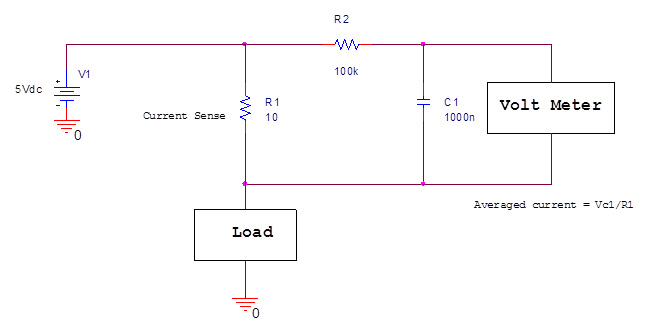 |
| Figure 1: Reference Circuit |
Component Selection
The capacitor type selection is very important. Theoretically, accuracy is 100% only if the capacitor is lossless. So accuracy of measurement depends highly on the capacitor characteristics. Polarized capacitors like tantalum and electrolyte capacitors have quite high leakage currents, which drastically reduces accuracy in measurements. Hence the best choice is a ceramic capacitor with the least amount of leakage.
Also the components need to be SMD, since a leaded component would introduce stray resistance and capacitance which would hinder accuracy. Also the SMD components can be placed very close together to improve the noise immunity.
Simulation
As shown in the below simulation, a square wave source (5V Level) is used and the connected total load is 5K ohms. If the duty cycle of the square wave is 50% then the averaged current should be 0.5mA,making the averaged voltage across the capacitor 10*0.5mA = 5mV. Simulation result as shown in the figure 3 shows the same 5mV reading.
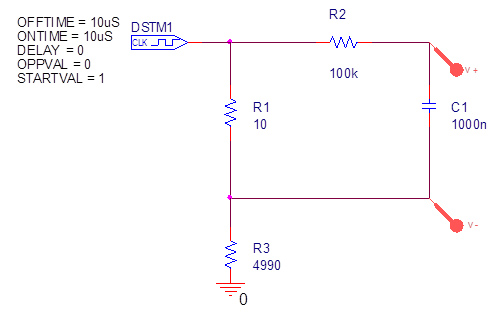 |
| Figure 2: Simulation Circuit |
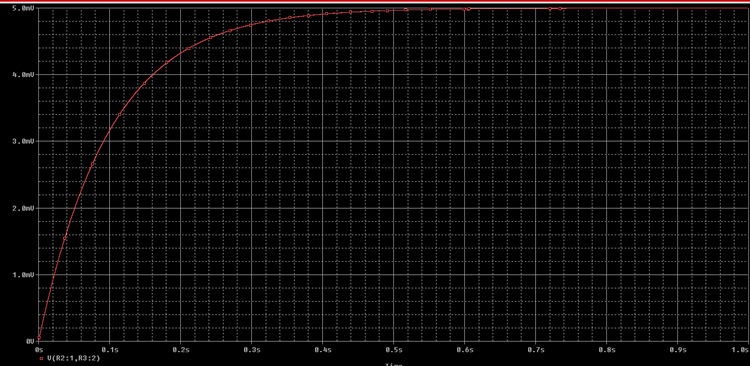 |
| Figure 3: Simulation result of above circuit |
On changing the duty cycle to 10% the result should be reduced 5 times compared to the 50% duty cycle. Figure 4 is the same circuit with 10% duty cycle of rectangle waveform. Now the reading should be 1mV. The simulated result shown in figure 5 gives the same results and proves that averaging is working accurately.
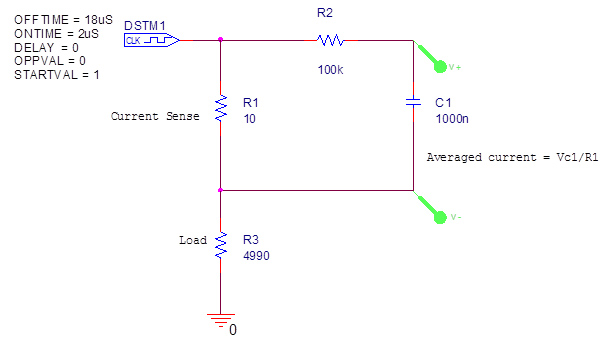 |
| Figure 4: Simulation circuit |
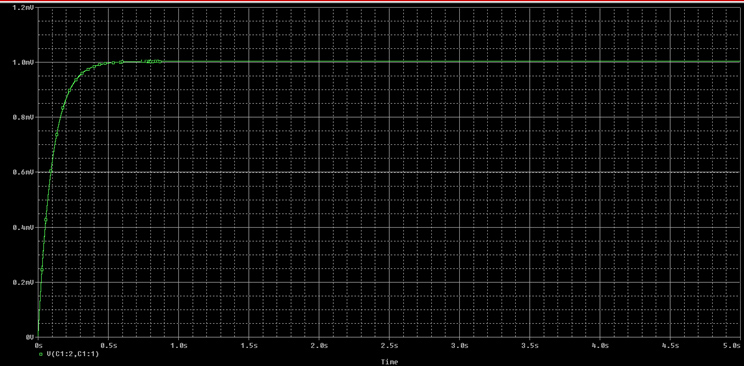 |
| Figure 5: Simulation result of above circuit |




No Comments